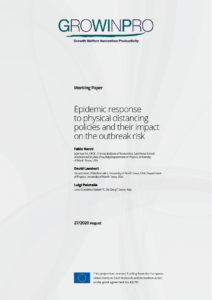We introduce a theoretical framework that highlights the impact of physical distancing variables such as human mobility and physical proximity on the evolution of epidemics and, crucially, on the reproduction number. In particular, in response to the coronavirus disease (CoViD-19) pandemic, countries have introduced various levels of ’lockdown’ to reduce the number of new infections. Specifically we use a collisional approach to an infection-age structured model described by a renewal equation for the time homogeneous evolution of epidemics. As a result, we show how various contributions of the lockdown policies, namely physical proximity and human mobility, reduce the impact of SARS-CoV-2 and mitigate the risk of disease resurgence. We check our theoretical framework using real-world data on physical distancing with two different data repositories, obtaining consistent results. Finally, we propose an equation for the effective reproduction number which takes into account types of interac- tions among people, which may help policy makers to improve remote-working organizational structure.

 Epidemic response to physical distancing policies and their impact on the outbreak risk
Epidemic response to physical distancing policies and their impact on the outbreak risk